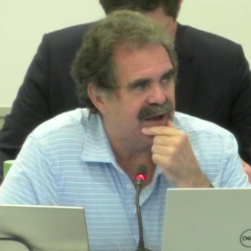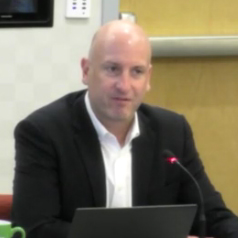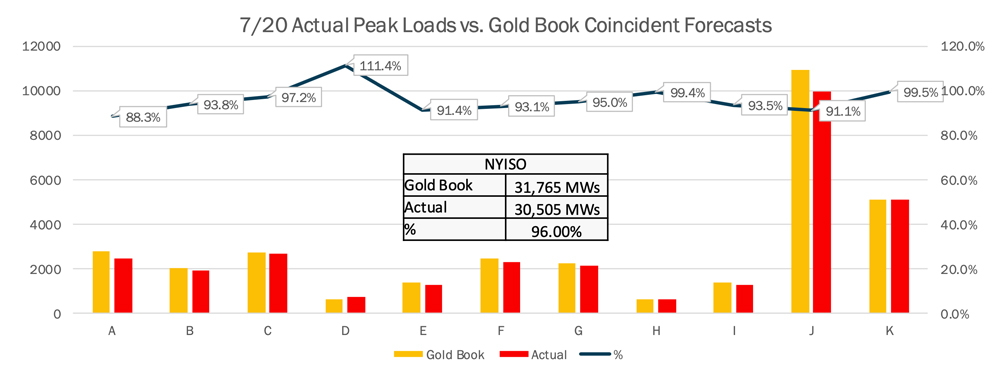The passage of the Inflation Reduction Act of 2022 (IRA) (H.R. 5376) — formerly known as the Build Back Better Act — is once again hanging on the vote of a conservative Democrat, in this case Sen. Krysten Sinema (Ariz.) and not Sen. Joe Manchin (W.Va.).
Sinema was not part of the negotiations between Manchin and Senate Majority Leader Chuck Schumer (D-N.Y.) that resulted in a deal on the bill, announced Wednesday. (See Schumer, Manchin Reach Climate Deal.) She has in the past opposed one of the bill’s key tax provision — the closing of so-called carried-interest loophole — which could cut into the lucrative income that asset managers earn from the large investments they manage.
Meanwhile, Manchin blitzed all the major Sunday talk shows to promote the bill. “This is a red, white and blue bill,” not green, he told Jake Tapper on CNN’s “State of the Union.”
While Sinema was not directly involved in the drafting of the IRA, Manchin said many of its provisions were influenced by her. Manchin also justified the secret negotiations between himself and Schumer because “I didn’t think it would come to fruition. I didn’t want to have disappoint people again,” he said.
“I think that basically when [Sinema] looks at the bill and sees the whole spectrum of what we’re doing and all of the energy we’re bringing and all the reduction of prices and fighting inflation … hopefully, she will be positive about it,” he said.
As they await Sinema’s decision and a review of the law by the Senate parliamentarian, clean energy companies and advocates are lining up with other Senate Democrats to push for passage of the bill, even if the Senate does not vote on it before its planned monthlong recess begins Aug. 8. (See related story, What’s in the Inflation Reduction Act, Part 1.)
Here are some of the key stakeholders and the provisions they support.
Carbon Capture and 45Q
The carbon capture industry has long lobbied for expanding the 45Q tax credit to apply to more projects by raising incentive amounts and lowering capture threshold amounts, the minimum CO2 facilities would have to capture to qualify for the credit.
The IRA would deliver on both counts. Under the bill, the incentive for carbon captured and sequestered in geologic formations, such as saline aquifers, would jump from $50/MT to $85/MT. The incentive for carbon utilization ― for example, for either alternative fuels or enhanced oil recovery ― would increase from $35/MT to $60/MT.
The incentives for direct air capture would go as high as $180/MT for permanently sequestered CO2 and $130/MT for carbon utilization or enhanced oil recovery.
Reductions in capture thresholds are even more dramatic. To qualify for the credit currently, CCS equipment at an electric generating facility has to capture 500,000 MT/year; under the IRA, the amount would be slashed to 18,750 MT/year. The threshold for other industrial facilities falls from 100,000 MT/year to 12,500 MT/year, and the threshold for direct air capture projects is cut from 25,000 MT/year to 1,000 MT/year.
If passed, these “monumental enhancements” could “provide the most transformative and far-reaching policy support in the world for the economy-wide deployment of carbon-management technologies,” said Madelyn Morrison, external affairs manager for the Carbon Capture Coalition. “Economy-wide commercial deployment of carbon-management technologies and infrastructure [are vital] if midcentury global temperature targets are to remain within reach.”
Green Hydrogen
Hydrogen production got a major boost in the Infrastructure Investment and Jobs Act with its $8 billion for regional clean hydrogen hubs and $1 billion aimed at reducing the cost of the electrolysis process used to produce zero-emission hydrogen.
The IRA follows up on this with a substantial production credit of 60 cents/kg for clean hydrogen, which could rise to $3/kg for facilities that pay prevailing wages and have certified apprenticeship programs.
Hydrogen production worldwide is estimated at 120 million MT, only about 1.9% of which is green, according to the International Energy Agency.
The bill would also provide reduced tax credits — 12 to 20 cents/kg — for blue hydrogen, produced from natural gas with carbon capture, depending on the level of emissions associated with any specific facility. However, a plant already receiving 45Q tax credits for carbon capture would not be able to receive the hydrogen credits.
These tax credits could make green hydrogen cheaper to produce than gray hydrogen, produced from natural gas without carbon capture, said Mona Dajani, global co-head of the Energy and Infrastructure Projects Team at New York law firm Pillsbury Winthrop Shaw Pittman.
Facilities qualifying for the $3/kg credit “will make it cheaper to produce [clean] hydrogen here in the U.S. than anywhere else in the world, because of natural gas prices,” she said.
Advanced Nuclear and HALEU
The IRA provides $700 million for building out a U.S. supply chain for high assay, low-enriched uranium (HALEU), which is the higher-density nuclear fuel needed for the advanced nuclear reactors being developed.
Unlike the uranium used for existing reactors in the U.S., HALEU has a higher level of the U-235 isotope, which allows it to produce more power per unit of volume, which in turn allows for smaller reactors.
According to Judi Greenwald, executive director of the Nuclear Innovation Alliance, $500 million of the IRA funds would go to supply chain development, with $100 million each for research and development, and for the transportation system needed to support the U.S. industry.
“It’s a significant investment for a really important component for advanced reactors,” Greenwald said. “A key condition for the success for advanced reactors is the availability of HALEU.”
At present, the Department of Energy is the only producer of HALEU in the U.S., and it can only enrich a small amount for use in research. Lawmakers on both sides of the aisle are eager to develop a domestic supply chain because Russia is the only other major producer of HALEU.
The IRA would provide another boost for advanced nuclear in the technology-neutral energy tax credits that will replace renewable energy production tax credits beginning in 2025, specifically for facilities producing zero-carbon energy. For plants complying with prevailing wage and apprenticeship requirements, the credit would be 1.5 cents/kWh.
Once a facility is online, credits would be available for 10 years, which “will make a huge difference in helping to get these early reactors built,” Greenwald said. “As you build them, you learn by doing, and then they get cheaper. This is the way we’re going to really help to commercialize advanced nuclear.”
Two advanced reactors, one in Wyoming and one in Washington state, being built with DOE funds are scheduled to be online by 2028.
Methane Emissions
The IRA would tackle methane emissions with a mix of incentives for mitigating emissions at wells, pipelines and other facilities, and penalties for emissions exceeding certain levels.
On the incentives side, the bill would give EPA $850 million through Sept. 30 2028, for “grants, rebates, contracts, loans and other activities” aimed at reducing methane emissions. The funds could be used for monitoring and reporting emissions, installing innovative emission-cutting equipment and plugging wells on nonfederal land.
An addition $700 million is allocated for similar activities targeted at “marginal conventional wells,” those that are more expensive to run because of environmental issues or low levels of production.
The bill would also authorize EPA to “impose and collect” penalties at a range of oil and gas facilities — including on- and offshore production plants, pipelines and storage — that emit more than 25,000 MT of CO2 per year. The thresholds for different kinds of oil and gas facilities vary, but the penalties are uniform, starting at $900/MT in 2024, $1,200/MT in 2025 and $1,500/MT in 2026 and beyond.
These provisions got a chilly reception from fossil fuel groups.
“While there are some improved provisions in the spending package … we oppose policies that increase taxes and discourage investment in America’s oil and natural gas,” said Amanda Eversole, chief advocacy officer of the American Petroleum Institute.
The American Gas Association tweeted out praise for the bill’s support for hydrogen and renewable natural gas but was mum on the methane provisions.
OSW, Permitting, Clean Ports
The IRA would reverse the Trump administration’s 10-year moratorium on development off the shores of Florida and the Carolinas. It also would begin a process for exploring the feasibility of offshore wind development in Puerto Rico, Guam, American Samoa, the U.S. Virgin Islands and the Northern Mariana Islands.
To accelerate the permitting process, the bill allocates $125 million for DOE, $100 million for FERC and $150 million for the Department of the Interior “to provide for the hiring and training of personnel, the development of programmatic environmental documents, the procurement of technical or scientific services for environmental reviews, the development of environmental data or information systems, stakeholder and community engagement, and the purchase of new equipment for environmental analysis to facilitate timely and efficient environmental reviews.”
The bill would also provide $400 million through 2031 to provide incentives for businesses serving communities with high levels of air pollution to replace heavy-duty diesel vehicles with zero-emission vehicles. Another $2.25 billion would be available for zero-emission equipment at U.S. ports.



